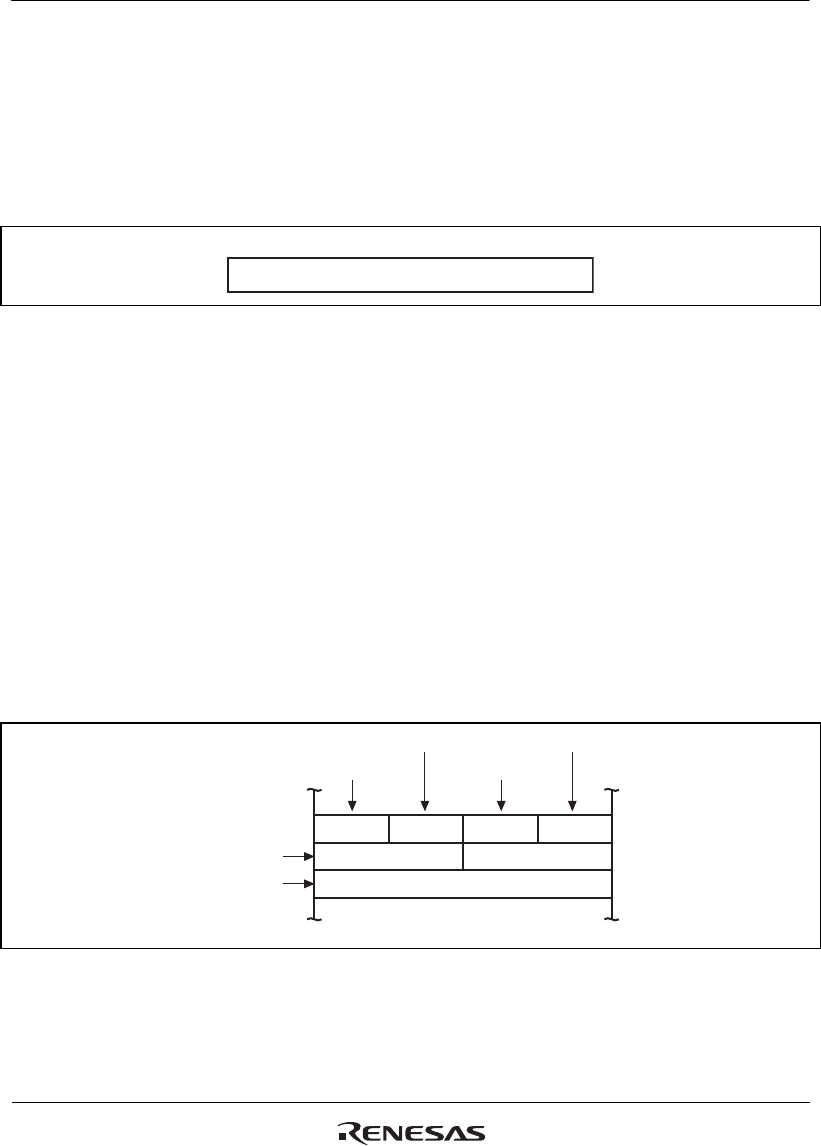
Section 2 CPU
Page 54 of 2108 R01UH0134EJ0400 Rev. 4.00
Sep 24, 2014
SH7262 Group, SH7264 Group
2.2 Data Formats
2.2.1 Data Format in Registers
Register operands are always longwords (32 bits). If the size of memory operand is a byte (8 bits)
or a word (16 bits), it is changed into a longword by expanding the sign-part when loaded into a
register.
31 0
Longword
Figure 2.4 Data Format in Registers
2.2.2 Data Formats in Memory
Memory data formats are classified into bytes, words, and longwords. Memory can be accessed in
8-bit bytes, 16-bit words, or 32-bit longwords. A memory operand of fewer than 32 bits is stored
in a register in sign-extended or zero-extended form.
A word operand should be accessed at a word boundary (an even address of multiple of two bytes:
address 2n), and a longword operand at a longword boundary (an even address of multiple of four
bytes: address 4n). Otherwise, an address error will occur. A byte operand can be accessed at any
address.
Only big-endian byte order can be selected for the data format.
Data formats in memory are shown in figure 2.5.
31 015
23 7
Byte Byte Byte Byte
WordWord
Address 2n
Address 4n
Longword
Address m Address m + 2
Address m + 1
Address m + 3
Big endian
Figure 2.5 Data Formats in Memory


















